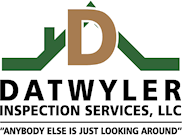Radon Gas FAQs
Unfortunately Radon Gas is considered the second largest contributor to lung cancer in the U.S. according to the Surgeon General. In 2003 Radon Gas was estimated to have caused 21,000 lung cancer deaths. Cigarette smoking is the number one.
The age of a home is not a factor in determining if you have Radon Gas or not. In fact, just because your neighbor had a measurement test done and they had a higher level does not mean you will too or vice versa. The only way you can be sure is to have your own test completed.
It is not just the Surgeon General, the EPA has created its own documents for home and business owners to try and communicate the dangers of Radon Gas and the importance of getting your home or business tested (www.epa.gov/radon). Even the World Health Organization has become involved and is actively working to help with the impact of this dangerous gas. There are many other organizations that have data available to the public, give me a call and I will be happy to assist you in finding more information.
It comes from Uranium, found in soil and water throughout the world. As uranium goes through its natural breakdown process it creates Radium. Radium as we know is a radioactive source and as it goes thru its natural breakdown it creates Radon Gas and Radon Decay Products. This radioactive gas will pass thru cracks or holes in a foundation, construction joints, gaps around service pipes, etc., thus making itself available for humans to breathe in. Keep in mind that there is Radon Gas in the outdoor air as this breakdown is a natural occurrence.
The good news is that there are proven methods that will reduce the levels to an acceptable range. This process is called Radon Mitigation. Although there is no way to completely remove all radon gas from inside a home because as mentioned earlier the Uranium breakdown process is a naturally occurring process and there is always a background level in the air we breathe every day, mitigation will decrease the levels within a home or business to an acceptable level. Be careful of anyone that tells you they can remove all Radon Gas from a home or business.
While it would be easy to say yes, the reality is that every home should be tested every 2 years. Uranium and Radium take a very long time to breakdown and just because your home tested good once does not mean it continues to be safe.
I heard that Radon is really only a concern in heavily populated areas like Chicago or L.A. – is that true?
I would love to be able to tell you that those of us living in Iowa are exempt from this danger, but I cannot. In fact, the EPA has listed Iowa as a Zone 1 area, meaning that they estimate that at least 50% of the homes in Iowa have a high level of Radon Gas. There is only one other state in the U.S. that the entire state is listed as a Zone 1.
Population does not have an impact, so whether you live in town or out in the country please have your home or business tested.
I am licensed by the State of Iowa as a Radon Measurement Specialist and would be more that willing to answer any questions or concerns you may have or to schedule a test for your home or business. Please feel free to give me a call anytime or send me an email.

